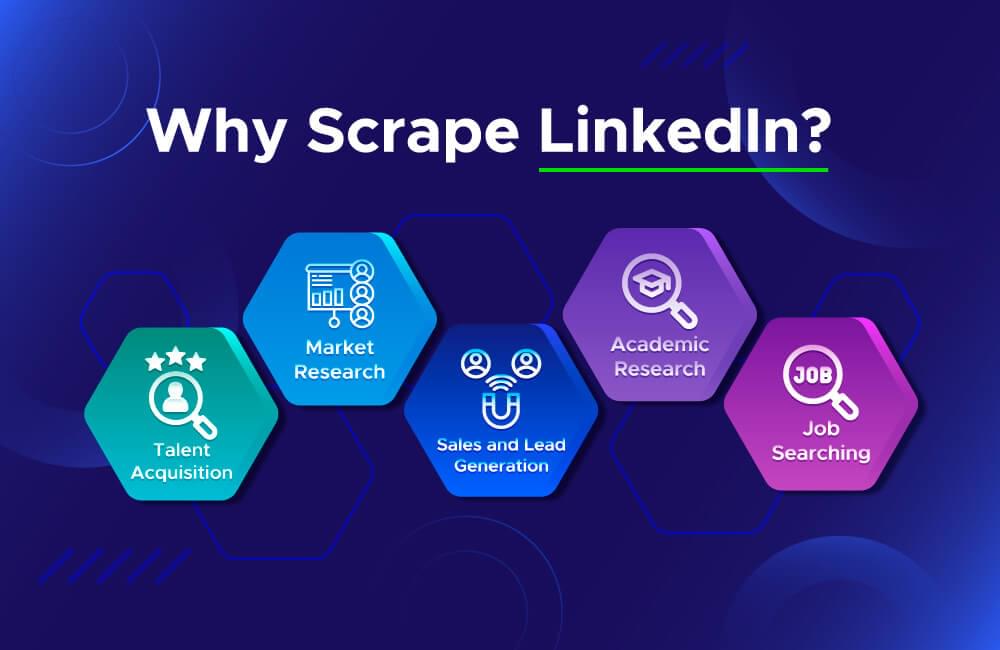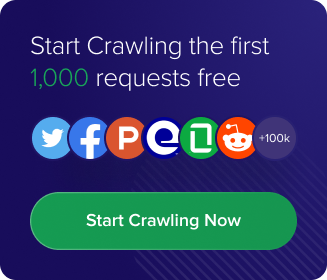1
2
3
4
5
6
7
8
9
10
11
12
13
14
15
16
17
18
19
20
21
22
23
24
25
26
27
28
29
30
31
32
33
34
35
36
37
38
39
40
41
42
43
44
45
46
47
48
49
50
51
52
53
54
55
56
57
58
59
60
61
62
63
64
65
66
67
68
69
70
71
72
73
74
75
76
77
78
79
80
81
82
83
84
85
86
87
88
89
90
91
92
93
94
95
96
97
98
99
100
101
102
103
104
105
106
107
108
109
110
111
112
113
114
115
116
117
118
119
120
121
122
123
124
125
126
127
128
129
130
131
132
133
134
135
136
137
138
139
140
141
142
143
144
145
146
147
148
149
150
151
152
153
154
155
156
157
158
159
160
161
162
163
164
165
166
167
168
169
170
171
172
173
174
175
176
177
178
179
180
181
182
183
184
185
186
187
188
189
190
191
192
193
194
195
196
197
198
199
200
201
202
203
204
205
206
207
208
209
210
211
212
213
214
215
216
217
218
219
220
221
222
223
224
225
226
227
228
229
230
231
232
233
234
235
236
237
238
239
240
241
242
243
244
245
246
247
248
249
250
251
252
253
254
255
256
257
258
259
260
261
262
263
264
265
266
267
268
269
270
271
272
273
274
275
276
277
278
279
280
281
282
283
284
285
286
287
288
289
290
291
292
293
294
295
296
297
298
299
300
301
302
303
304
305
306
307
308
309
310
311
312
313
314
315
316
317
318
319
320
321
322
323
324
325
326
327
328
329
330
331
332
333
334
335
336
337
338
339
340
341
342
343
344
345
346
347
348
349
350
351
352
353
354
355
356
357
358
359
360
361
362
363
364
365
366
367
368
369
370
371
372
373
374
375
376
377
378
379
380
381
382
383
384
385
386
387
388
389
390
391
392
393
394
395
396
397
398
399
400
401
402
403
404
405
406
407
408
409
410
411
412
413
414
415
416
417
418
419
420
421
422
423
424
425
426
427
428
429
430
431
432
433
434
435
436
437
438
439
440
441
442
443
444
445
446
447
448
449
450
451
452
453
454
455
456
457
458
459
460
461
462
463
464
465
466
467
468
469
470
471
472
473
474
475
476
477
478
479
480
481
482
483
484
485
486
487
488
489
490
491
492
493
494
495
496
497
498
499
500
501
502
503
504
505
506
507
508
509
510
511
512
513
514
515
516
517
518
519
520
521
522
523
524
525
526
527
528
529
530
531
532
533
534
535
536
537
538
539
540
541
542
543
544
545
546
547
548
549
550
551
552
553
554
555
556
557
558
559
560
561
562
563
564
565
566
567
568
569
570
571
572
573
574
575
576
577
578
579
580
581
582
583
584
585
586
587
588
589
590
591
592
593
594
595
596
597
598
599
600
601
602
603
604
605
606
607
608
609
610
611
612
613
614
615
616
617
618
619
620
621
622
623
624
625
626
627
628
| {
"title": "Amazon",
"headline": "Software Development",
"cover_image": "https://media.licdn.com/dms/image/D4D3DAQGri_YWxYb-GQ/image-scale_191_1128/0/1681945878609/amazon_cover?e=2147483647&v=beta&t=DEHImsFhQdlARMSTcY2AmdImxdLxIyvDncPmPQEpebY",
"company_image": "https://media.licdn.com/dms/image/C560BAQHTvZwCx4p2Qg/company-logo_200_200/0/1630640869849/amazon_logo?e=2147483647&v=beta&t=2vRB20XZOYNtXSr5GHAUUQXXII4lvgcotA2QTMcRHOI",
"url": "https://www.linkedin.com/company/amazon",
"employees": {
"numberOfEmployees": 737833,
"link": "https://www.linkedin.com/search/results/people/?facetCurrentCompany=%5B15218805%2C+2649984%2C+17411%2C+78392228%2C+208137%2C+61712%2C+2382910%2C+49318%2C+16551%2C+80073065%2C+47157%2C+21433%2C+71099%2C+860467%2C+12227%2C+167364%2C+4787585%2C+11091426%2C+451028%2C+111446%2C+14951%2C+46825%2C+2320329%2C+34924%2C+1586%5D"
},
"followersCount": 31243559,
"tagging": "",
"description": "Amazon is guided by four principles: customer obsession rather than competitor focus, passion for invention, commitment to operational excellence, and long-term thinking. We are driven by the excitement of building technologies, inventing products, and providing services that change lives. We embrace new ways of doing things, make decisions quickly, and are not afraid to fail. We have the scope and capabilities of a large company, and the spirit and heart of a small one. Together, Amazonians research and develop new technologies from Amazon Web Services to Alexa on behalf of our customers: shoppers, sellers, content creators, and developers around the world. Our mission is to be Earth's most customer-centric company. Our actions, goals, projects, programs, and inventions begin and end with the customer top of mind. You'll also hear us say that at Amazon, it's always \"Day 1.\" What do we mean? That our approach remains the same as it was on Amazon's very first day - to make smart, fast decisions, stay nimble, invent, and focus on delighting our customers.",
"basicInfo": [
{
"name": "Website",
"value": "https://www.aboutamazon.com/ External link for Amazon"
},
{
"name": "Industry",
"value": "Software Development"
},
{
"name": "Company size",
"value": "10,001+ employees"
},
{
"name": "Headquarters",
"value": "Seattle, WA"
},
{
"name": "Type",
"value": "Public Company"
},
{
"name": "Specialties",
"value": "e-Commerce, Retail, Operations, and Internet"
}
],
"locations": {
"primary": {
"address": "2127 7th Ave.Seattle, WA 98109, US",
"link": "https://www.bing.com/maps?where=2127+7th+Ave.+Seattle+98109+WA+US&trk=org-locations_url"
},
"other": [
{
"address": "12900 Worldgate DrHerndon, VA 20170, US",
"link": "https://www.bing.com/maps?where=12900+Worldgate+Dr+Herndon+20170+VA+US&trk=org-locations_url"
},
{
"address": "7200 Discovery DrChattanooga, TN 37416, US",
"link": "https://www.bing.com/maps?where=7200+Discovery+Dr+Chattanooga+37416+TN+US&trk=org-locations_url"
},
{
"address": "1100 Enterprise WaySunnyvale, CA 94089, US",
"link": "https://www.bing.com/maps?where=1100+Enterprise+Way+Sunnyvale+94089+CA+US&trk=org-locations_url"
},
{
"address": "2010 Broening HwyBaltimore, MD 21224, US",
"link": "https://www.bing.com/maps?where=2010+Broening+Hwy+Baltimore+21224+MD+US&trk=org-locations_url"
},
{
"address": "Buyukdere Caddesi 185Istanbul, Istanbul 34394, TR",
"link": "https://www.bing.com/maps?where=Buyukdere+Caddesi+185+Istanbul+34394+Istanbul+TR&trk=org-locations_url"
},
{
"address": "Via de las Dos Castillas, 33Pozuelo de Alarcon, Community of Madrid 28224, ES",
"link": "https://www.bing.com/maps?where=Via+de+las+Dos+Castillas,+33+Pozuelo+de+Alarcon+28224+Community+of+Madrid+ES&trk=org-locations_url&"
},
{
"address": "Im GewerbeparkRegensburg, Bavaria 93059, DE",
"link": "https://www.bing.com/maps?where=Im+Gewerbepark+Regensburg+93059+Bavaria+DE&trk=org-locations_url"
},
{
"address": "8 Exhibition StMelbourne, VIC 3000, AU",
"link": "https://www.bing.com/maps?where=8+Exhibition+St+Melbourne+3000+VIC+AU&trk=org-locations_url"
},
{
"address": "705 Boulder DrBreinigsville, PA 18031, US",
"link": "https://www.bing.com/maps?where=705+Boulder+Dr+Breinigsville+18031+PA+US&trk=org-locations_url"
},
{
"address": "2700 Regent BlvdIrving, TX 75063, US",
"link": "https://www.bing.com/maps?where=2700+Regent+Blvd+Irving+75063+TX+US&trk=org-locations_url"
},
{
"address": "500 Kinetic DrHuntington, WV 25701, US",
"link": "https://www.bing.com/maps?where=500+Kinetic+Dr+Huntington+25701+WV+US&trk=org-locations_url"
},
{
"address": "1125 Remington BlvdRomeoville, IL 60446, US",
"link": "https://www.bing.com/maps?where=1125+Remington+Blvd+Romeoville+60446+IL+US&trk=org-locations_url"
},
{
"address": "Burlington RoadDublin, County Dublin, IE",
"link": "https://www.bing.com/maps?where=Burlington+Road+Dublin+County+Dublin+IE&trk=org-locations_url"
},
{
"address": "109 Braid StNew Westminster, BC V3L 5H4, CA",
"link": "https://www.bing.com/maps?where=109+Braid+St+New+Westminster+V3L+5H4+BC+CA&trk=org-locations_url"
},
{
"address": "Solan RdCape Town, Western Cape 8001, ZA",
"link": "https://www.bing.com/maps?where=Solan+Rd+Cape+Town+8001+Western+Cape+ZA&trk=org-locations_url"
},
{
"address": "2700 Center DrDupont, WA 98327, US",
"link": "https://www.bing.com/maps?where=2700+Center+Dr+Dupont+98327+WA+US&trk=org-locations_url"
},
{
"address": "8000 N Virginia StReno, NV 89506, US",
"link": "https://www.bing.com/maps?where=8000+N+Virginia+St+Reno+89506+NV+US&trk=org-locations_url"
},
{
"address": "4848 Perrin CreekSan Antonio, TX 78217, US",
"link": "https://www.bing.com/maps?where=4848+Perrin+Creek+San+Antonio+78217+TX+US&trk=org-locations_url"
},
{
"address": "1555 N Chrisman RdTracy, CA 95304, US",
"link": "https://www.bing.com/maps?where=1555+N+Chrisman+Rd+Tracy+95304+CA+US&trk=org-locations_url"
},
{
"address": "60 Holborn ViaductLondon, England EC1A 2FD, GB",
"link": "https://www.bing.com/maps?where=60+Holborn+Viaduct+London+EC1A+2FD+England+GB&trk=org-locations_url"
},
{
"address": "120 Bremner BlvdToronto, ON M5J 0A8, CA",
"link": "https://www.bing.com/maps?where=120+Bremner+Blvd+Toronto+M5J+0A8+ON+CA&trk=org-locations_url"
},
{
"address": "31 Rives de ClausenLuxembourg, Luxembourg 2165, LU",
"link": "https://www.bing.com/maps?where=31+Rives+de+Clausen+Luxembourg+2165+Luxembourg+LU&trk=org-locations_url"
},
{
"address": "Sunbank LaneAltrincham, England WA15 0, GB",
"link": "https://www.bing.com/maps?where=Sunbank+Lane+Altrincham+WA15+0+England+GB&trk=org-locations_url"
},
{
"address": "86 5th St NWAtlanta, GA 30308, US",
"link": "https://www.bing.com/maps?where=86+5th+St+NW+Atlanta+30308+GA+US&trk=org-locations_url"
},
{
"address": "402 John Dodd RdSpartanburg, SC 29303, US",
"link": "https://www.bing.com/maps?where=402+John+Dodd+Rd+Spartanburg+29303+SC+US&trk=org-locations_url"
},
{
"address": "Waterloo PlaceEdinburgh, Scotland EH1 3EG, GB",
"link": "https://www.bing.com/maps?where=Waterloo+Place+Edinburgh+EH1+3EG+Scotland+GB&trk=org-locations_url"
},
{
"address": "Am Brauhaus 12Dresden, SN 01099, DE",
"link": "https://www.bing.com/maps?where=Am+Brauhaus+12+Dresden+01099+SN+DE&trk=org-locations_url"
},
{
"address": "3501 120th AveKenosha, WI 53144, US",
"link": "https://www.bing.com/maps?where=3501+120th+Ave+Kenosha+53144+WI+US&trk=org-locations_url"
},
{
"address": "24208 San Michele RdMoreno Valley, CA 92551, US",
"link": "https://www.bing.com/maps?where=24208+San+Michele+Rd+Moreno+Valley+92551+CA+US&trk=org-locations_url"
},
{
"address": "Calle del Hierro, 21Madrid, Community of Madrid 28045, ES",
"link": "https://www.bing.com/maps?where=Calle+del+Hierro,+21+Madrid+28045+Community+of+Madrid+ES&trk=org-locations_url&"
},
{
"address": "50 Airways BlvdNashville, TN 37217, US",
"link": "https://www.bing.com/maps?where=50+Airways+Blvd+Nashville+37217+TN+US&trk=org-locations_url"
},
{
"address": "3350 Laurel Ridge AveRuskin, FL 33570, US",
"link": "https://www.bing.com/maps?where=3350+Laurel+Ridge+Ave+Ruskin+33570+FL+US&trk=org-locations_url"
},
{
"address": "4255 Anson BlvdWhitestown, IN 46075, US",
"link": "https://www.bing.com/maps?where=4255+Anson+Blvd+Whitestown+46075+IN+US&trk=org-locations_url"
},
{
"address": "2170 RT-27Edison, NJ 08817, US",
"link": "https://www.bing.com/maps?where=2170+RT-27+Edison+08817+NJ+US&trk=org-locations_url"
},
{
"address": "560 Merrimac AveMiddletown, DE 19709, US",
"link": "https://www.bing.com/maps?where=560+Merrimac+Ave+Middletown+19709+DE+US&trk=org-locations_url"
},
{
"address": "150 W Jefferson AveDetroit, MI 48226, US",
"link": "https://www.bing.com/maps?where=150+W+Jefferson+Ave+Detroit+48226+MI+US&trk=org-locations_url"
},
{
"address": "101 Main StCambridge, MA 02142, US",
"link": "https://www.bing.com/maps?where=101+Main+St+Cambridge+02142+MA+US&trk=org-locations_url"
},
{
"address": "1800 140th Ave ESumner, WA 98390, US",
"link": "https://www.bing.com/maps?where=1800+140th+Ave+E+Sumner+98390+WA+US&trk=org-locations_url"
},
{
"address": "5000 Commerce WayPetersburg, VA 23803, US",
"link": "https://www.bing.com/maps?where=5000+Commerce+Way+Petersburg+23803+VA+US&trk=org-locations_url"
},
{
"address": "50 New Canton WayRobbinsville Township, NJ 08691, US",
"link": "https://www.bing.com/maps?where=50+New+Canton+Way+Robbinsville+Township+08691+NJ+US&trk=org-locations_url"
},
{
"address": "12900 Pecan Park RdJacksonville, FL 32218, US",
"link": "https://www.bing.com/maps?where=12900+Pecan+Park+Rd+Jacksonville+32218+FL+US&trk=org-locations_url"
},
{
"address": "4400 12th Street ExtWest Columbia, SC 29172, US",
"link": "https://www.bing.com/maps?where=4400+12th+Street+Ext+West+Columbia+29172+SC+US&trk=org-locations_url"
},
{
"address": "2 Park StSydney, NSW 2000, AU",
"link": "https://www.bing.com/maps?where=2+Park+St+Sydney+2000+NSW+AU&trk=org-locations_url"
},
{
"address": "510 W Georgia StVancouver, BC V6B 0M3, CA",
"link": "https://www.bing.com/maps?where=510+W+Georgia+St+Vancouver+V6B+0M3+BC+CA&trk=org-locations_url"
},
{
"address": "7290 Investment DrNorth Charleston, SC 29418, US",
"link": "https://www.bing.com/maps?where=7290+Investment+Dr+North+Charleston+29418+SC+US&trk=org-locations_url"
},
{
"address": "11999 National Rd SWPataskala, OH 43062, US",
"link": "https://www.bing.com/maps?where=11999+National+Rd+SW+Pataskala+43062+OH+US&trk=org-locations_url"
},
{
"address": "6400 Avenue 6000Cork, County Cork T12 D292, IE",
"link": "https://www.bing.com/maps?where=6400+Avenue+6000+Cork+T12+D292+County+Cork+IE&trk=org-locations_url"
},
{
"address": "96 E San Fernando StSan Jose, CA 95113, US",
"link": "https://www.bing.com/maps?where=96+E+San+Fernando+St+San+Jose+95113+CA+US&trk=org-locations_url"
},
{
"address": "Namestie 1. maja 7286/18Bratislava, Bratislava 811 06, SK",
"link": "https://www.bing.com/maps?where=Namestie+1.+maja+7286/18+Bratislava+811+06+Bratislava+SK&trk=org-locations_url"
},
{
"address": "Rue de PlanqueLauwin-Planque, Hauts-de-France 59553, FR",
"link": "https://www.bing.com/maps?where=Rue+de+Planque+Lauwin-Planque+59553+Hauts-de-France+FR&trk=org-locations_url"
},
{
"address": "23 Church StSingapore, Singapore 049481, SG",
"link": "https://www.bing.com/maps?where=23+Church+St+Singapore+049481+Singapore+SG&trk=org-locations_url"
},
{
"address": "8120 Humble Westfield RdHumble, TX 77338, US",
"link": "https://www.bing.com/maps?where=8120+Humble+Westfield+Rd+Humble+77338+TX+US&trk=org-locations_url"
},
{
"address": "2996 Ramona AveSacramento, CA 95826, US",
"link": "https://www.bing.com/maps?where=2996+Ramona+Ave+Sacramento+95826+CA+US&trk=org-locations_url"
},
{
"address": "801 30 St NECalgary, AB T2A 5L7, CA",
"link": "https://www.bing.com/maps?where=801+30+St+NE+Calgary+T2A+5L7+AB+CA&trk=org-locations_url"
},
{
"address": "3610 NW Saint Helens RdPortland, OR 97210, US",
"link": "https://www.bing.com/maps?where=3610+NW+Saint+Helens+Rd+Portland+97210+OR+US&trk=org-locations_url"
},
{
"address": "Avenida Juan Salvador Agraz 73Cuajimalpa de Morelos, CDMX 05348, MX",
"link": "https://www.bing.com/maps?where=Avenida+Juan+Salvador+Agraz+73+Cuajimalpa+de+Morelos+05348+CDMX+MX&trk=org-locations_url"
},
{
"address": "8050 Heritage RdBrampton, ON L6Y 0C9, CA",
"link": "https://www.bing.com/maps?where=8050+Heritage+Rd+Brampton+L6Y+0C9+ON+CA&trk=org-locations_url"
},
{
"address": "Evropska 2758/11Prague, Prague 160 00, CZ",
"link": "https://www.bing.com/maps?where=Evropska+2758/11+Prague+160+00+Prague+CZ&trk=org-locations_url"
},
{
"address": "1910 E Central AveSan Bernardino, CA 92408, US",
"link": "https://www.bing.com/maps?where=1910+E+Central+Ave+San+Bernardino+92408+CA+US&trk=org-locations_url"
},
{
"address": "1414 S Council RdOklahoma City, OK 73128, US",
"link": "https://www.bing.com/maps?where=1414+S+Council+Rd+Oklahoma+City+73128+OK+US&trk=org-locations_url"
},
{
"address": "1401 E McCarty LnSan Marcos, TX 78666, US",
"link": "https://www.bing.com/maps?where=1401+E+McCarty+Ln+San+Marcos+78666+TX+US&trk=org-locations_url"
},
{
"address": "Habibullah RoadChennai, Tamil Nadu 600017, IN",
"link": "https://www.bing.com/maps?where=Habibullah+Road+Chennai+600017+Tamil+Nadu+IN&trk=org-locations_url"
},
{
"address": "188 Spear StSan Francisco, CA 94105, US",
"link": "https://www.bing.com/maps?where=188+Spear+St+San+Francisco+94105+CA+US&trk=org-locations_url"
},
{
"address": "Via delle MechanicaFara in Sabina, Laz. 02032, IT",
"link": "https://www.bing.com/maps?where=Via+delle+Mechanica+Fara+in+Sabina+02032+Laz.+IT&trk=org-locations_url"
},
{
"address": "2302 Marietta Blvd NWAtlanta, GA 30318, US",
"link": "https://www.bing.com/maps?where=2302+Marietta+Blvd+NW+Atlanta+30318+GA+US&trk=org-locations_url"
},
{
"address": "Lane CtSterling, VA 20166, US",
"link": "https://www.bing.com/maps?where=Lane+Ct+Sterling+20166+VA+US&trk=org-locations_url"
},
{
"address": "SapirHerzliya, Tel Aviv 46000, IL",
"link": "https://www.bing.com/maps?where=Sapir+Herzliya+46000+Tel+Aviv+IL&trk=org-locations_url"
},
{
"address": "462 Hazelwood Logistics Center DrHazelwood, MO 63042, US",
"link": "https://www.bing.com/maps?where=462+Hazelwood+Logistics+Center+Dr+Hazelwood+63042+MO+US&trk=org-locations_url"
},
{
"address": "390 Interlocken CrescentBroomfield, CO 80021, US",
"link": "https://www.bing.com/maps?where=390+Interlocken+Crescent+Broomfield+80021+CO+US&trk=org-locations_url"
},
{
"address": "10201 Torre AveCupertino, CA 95014, US",
"link": "https://www.bing.com/maps?where=10201+Torre+Ave+Cupertino+95014+CA+US&trk=org-locations_url"
},
{
"address": "700 Westport PkwyFort Worth, TX 76177, US",
"link": "https://www.bing.com/maps?where=700+Westport+Pkwy+Fort+Worth+76177+TX+US&trk=org-locations_url"
},
{
"address": "763 SE Kasota AveMinneapolis, MN 55414, US",
"link": "https://www.bing.com/maps?where=763+SE+Kasota+Ave+Minneapolis+55414+MN+US&trk=org-locations_url"
},
{
"address": "1850 Mercer RdLexington, KY 40511, US",
"link": "https://www.bing.com/maps?where=1850+Mercer+Rd+Lexington+40511+KY+US&trk=org-locations_url"
},
{
"address": "4411 W 2100 SWest Valley City, UT 84120, US",
"link": "https://www.bing.com/maps?where=4411+W+2100+S+West+Valley+City+84120+UT+US&trk=org-locations_url"
},
{
"address": "Carrer de l'Alta RibagorcaEl Prat de Llobregat, Catalonia 08820, ES",
"link": "https://www.bing.com/maps?where=Carrer+de+l'Alta+Ribagorca+El+Prat+de+Llobregat+08820+Catalonia+ES&trk=org-locations_url&"
},
{
"address": "11501 Alterra PkwyAustin, TX 78758, US",
"link": "https://www.bing.com/maps?where=11501+Alterra+Pkwy+Austin+78758+TX+US&trk=org-locations_url"
},
{
"address": "Sikanderpur FlyoverGurugram, HR 122008, IN",
"link": "https://www.bing.com/maps?where=Sikanderpur+Flyover+Gurugram+122008+HR+IN&trk=org-locations_url"
},
{
"address": "2277 Center Square RdLogan Township, NJ 08085, US",
"link": "https://www.bing.com/maps?where=2277+Center+Square+Rd+Logan+Township+08085+NJ+US&trk=org-locations_url"
},
{
"address": "Marcel-Breuer-Straße 12Munich, Bavaria 80807, DE",
"link": "https://www.bing.com/maps?where=Marcel-Breuer-Stra%C3%9Fe+12+Munich+80807+Bavaria+DE&trk=org-locations_url"
}
]
},
"employeesAtCompany": [
{
"title": "Steven Hatch",
"position": "Experienced Amazon Engineering Leader | Generative AI at Amazon",
"link": "https://www.linkedin.com/in/hatch?trk=org-employees",
"image": "https://media.licdn.com/dms/image/D4E03AQG823Q38d3Igg/profile-displayphoto-shrink_100_100/0/1673281011530?e=2147483647&v=beta&t=sK2PKC8tMDWU5koa0DpKxZzhQ1Zofs1shi941xNscrQ",
"location": ""
},
{
"title": "Brendon Wilson",
"position": "Product Management Leader | Voice | Cloud | AI",
"link": "https://www.linkedin.com/in/brendonwilson?trk=org-employees",
"image": "https://media.licdn.com/dms/image/C5603AQGpn-EXgHDXiQ/profile-displayphoto-shrink_100_100/0/1526444059773?e=2147483647&v=beta&t=hfK-dOJtTnoAHYmsP53HQl7n9rewgM8_EpzZYwW93cs",
"location": ""
},
{
"title": "Kara H. Hurst",
"position": "Chief Sustainability Officer, Amazon",
"link": "https://www.linkedin.com/in/karahhurst?trk=org-employees",
"image": "https://media.licdn.com/dms/image/D5603AQFpYGVopejk6g/profile-displayphoto-shrink_100_100/0/1700153802278?e=2147483647&v=beta&t=exoaVmbqrMPy9xjau_dj9x4xgRNhFVoZfDc_WFbi2j8",
"location": ""
},
{
"title": "John Combs",
"position": "Business & Corporate Development at Amazon",
"link": "https://www.linkedin.com/in/johnmcombs?trk=org-employees",
"image": "https://media.licdn.com/dms/image/C4E03AQEMAiAH3Qu03Q/profile-displayphoto-shrink_100_100/0/1516155765577?e=2147483647&v=beta&t=FhQvl_SXSxTTO6ZQt-Hb-BXzqOAYJpqdnZ3tcPkaI_w",
"location": ""
}
],
"updates": [
{
"actor": "Amazon",
"actorLink": "https://www.linkedin.com/company/amazon?trk=organization_guest_main-feed-card_feed-actor-name",
"postDate": "7h",
"text": "Looking to boost your AI skills? 💥 Research shows that professionals with strong AI skills can earn higher salaries – up to 47% higher in IT, 43% higher in sales and marketing, and 42% higher in finance. Amazon Web Services (AWS) has you covered through two new AWS Certifications – one on AI foundations, and one for machine learning. Here’s the breakdown.⬇️ 1️⃣ AWS Certified AI Practitioner: This one's not just for techies. If you work in a field like marketing, sales, finance, or HR, you can increase your knowledge about AI and Gen AI concepts while learning how to sniff out opportunities to use AI tools in the workplace. 2️⃣ AWS Certified Machine Learning Engineer – Associate: This one's designed for people with slightly more ML experience. This certification is for you if you want to validate that you can build, deploy, and maintain AI models for real-time use. Whether you’re a student beginning to explore a career in AI, or a professional looking to get ahead, these new certifications can help you stay on the cutting edge. We're curious to know: are you interested in boosting your AI skills? 📕 💡 Learn more: https://amzn.to/3RnMxCw",
"media": [],
"reactionsCount": 291,
"commentsCount": 39,
"textLinks": [
"https://www.linkedin.com/company/amazon-web-services?trk=organization_guest_main-feed-card-text",
"https://amzn.to/3RnMxCw?trk=organization_guest_main-feed-card-text"
],
"textTags": []
},
{
"actor": "Amazon",
"actorLink": "https://www.linkedin.com/company/amazon?trk=organization_guest_main-feed-card_feed-actor-name",
"postDate": "1d",
"text": "Watch below as Amazon leaders share their best pieces of career advice. In this compilation from our Meet the Leader series, they answered some hard-hitting questions – including Star Wars vs. Star Trek. What are your best leadership tips? ⭐ Drop them in the comments below. ⬇️ Learn more here: https://amzn.to/3xfURO0",
"media": [],
"reactionsCount": 747,
"commentsCount": 51,
"textLinks": ["https://amzn.to/3xfURO0?trk=organization_guest_main-feed-card-text"],
"textTags": []
},
{
"actor": "Amazon",
"actorLink": "https://www.linkedin.com/company/amazon?trk=organization_guest_main-feed-card_feed-actor-name",
"postDate": "3d",
"text": "🗽 Step into history at our newest New York office. Originally one of the first department stores in the U.S., we restored this iconic Lord & Taylor NYC landmark to its roots with a modern twist.",
"media": [],
"reactionsCount": 2870,
"commentsCount": 130,
"textLinks": [],
"textTags": []
},
{
"actor": "Amazon",
"actorLink": "https://www.linkedin.com/company/amazon?trk=organization_guest_main-feed-card_feed-actor-name",
"postDate": "1w",
"text": "🏋️♂️ Meet Amazon's very own strongman! 🏋️♂️ This weekend, 27-year-old Luke Sperduti from Bristol, England will be competing for the title of UK’s Strongest Man. 💪 Since joining Amazon in 2020, Luke has risen to the role of Operations Supervisor and will soon take on a new challenge. His journey to strength started in the Corps of Royal Engineers, where he developed his passion for powerlifting. Fuelled by an impressive diet, Luke's daily intake includes porridge, tortellini pasta, and 4-5 meals a day, totaling around 6000 calories. 🍽️ Everyone wish Luke good luck ahead of his competition! Go, Luke!",
"media": [],
"reactionsCount": 4129,
"commentsCount": 171,
"textLinks": [],
"textTags": []
},
{
"actor": "Amazon",
"actorLink": "https://www.linkedin.com/company/amazon?trk=organization_guest_main-feed-card_feed-actor-name",
"postDate": "1w",
"text": "Love who you want to love. Be who you want to be. Here's to equality. Here's to Pride. 🏳️🌈 🏳️⚧️",
"media": [],
"reactionsCount": 2934,
"commentsCount": 152,
"textLinks": [],
"textTags": []
},
{
"actor": "Matt Garman",
"actorLink": "https://www.linkedin.com/in/mattgarman?trk=organization_guest_main-feed-card_feed-actor-name",
"postDate": "1w",
"text": "Amazon reposted thisSharing a note I sent to all AWS employees today: Team, Over the past 18 years, I've had the privilege of working alongside the most talented, innovative, and customer-obsessed people on the planet. The journey has been nothing short of amazing, and today, I'm incredibly excited to mark Day 1 as CEO of AWS. From the very beginning, we’ve been driven by a commitment to deliver innovative products and services that solve real problems for our customers, and to anticipate ones they haven’t encountered yet. I love how this customer obsession allows us to tackle what sometimes seems impossible—and that relentless focus is still at our core today. We remain intent on providing secure, high-performing, sustainable, and operationally excellent cloud infrastructure and services that customers and partners can trust with their most precious data and workloads. The advances we're seeing in generative AI present one of the most exciting technological opportunities of our lifetimes, and thanks to all of you, we are helping tens of thousands of customers across every industry move quickly with this technology and change the way they work. As we continue expanding our array of building blocks to help customers take advantage of new technologies, we’re also continually growing our infrastructure around the world to help them securely run their mission-critical workloads. AWS has always been a place where smart risk-taking, customer obsession, and a never-ending drive to innovate are embraced and celebrated. With that foundation, there’s massive opportunity ahead. I’m looking forward to building this next chapter together. Matt",
"media": [],
"reactionsCount": 18587,
"commentsCount": 548,
"textLinks": [
"https://www.linkedin.com/company/amazon?trk=organization_guest_main-feed-card_feed-reaction-header"
],
"textTags": []
},
{
"actor": "Amazon",
"actorLink": "https://www.linkedin.com/company/amazon?trk=organization_guest_main-feed-card_feed-actor-name",
"postDate": "1w",
"text": "Great to be named one of TIME magazine’s 100 most influential companies for 2024. TIME’s annual list reflects companies making extraordinary impacts worldwide – for us that includes our investments in #AI and expansion into South Africa. The selection process involved nominations across sectors, followed by rigorous evaluation by TIME’s editors on key criteria such as impact, innovation, ambition, and success. 🙏 Full article here: https://amzn.to/3VaN2RA",
"media": [],
"reactionsCount": 1596,
"commentsCount": 123,
"textLinks": [
"https://www.linkedin.com/company/time?trk=organization_guest_main-feed-card-text",
"https://amzn.to/3VaN2RA?trk=organization_guest_main-feed-card-text"
],
"textTags": [
{
"hashtag": "#AI",
"link": "https://www.linkedin.com/signup?session_redirect=https://www.linkedin.com/feed/hashtag/ai&trk=organization_guest_main-feed-card-text"
}
]
},
{
"actor": "Amazon",
"actorLink": "https://www.linkedin.com/company/amazon?trk=organization_guest_main-feed-card_feed-actor-name",
"postDate": "2w",
"text": "Happiness is seeing these faces every day at work! 🐶",
"media": [],
"reactionsCount": 29531,
"commentsCount": 653,
"textLinks": [],
"textTags": []
},
{
"actor": "Amazon",
"actorLink": "https://www.linkedin.com/company/amazon?trk=organization_guest_main-feed-card_feed-actor-name",
"postDate": "2w",
"text": "At a time when rapid responses to natural disasters are essential, we have taken a decisive step: Our new disaster relief base in Rheinberg, Germany, near Düsseldorf, is now operational. 🚀 🇩🇪 We have 13 Disaster Relief Hubs that span across Germany, Australia, India, Japan, and the United States. These bases allow us to respond efficiently to emergencies like floods, fires, and earthquakes by leveraging our global logistics network to quickly deliver relief supplies. Our items in stock include tents, blankets, camp beds, mats, sleeping bags, and hygiene kits with soap, toothbrushes, and toothpaste. Our data analysis confirms that over 80% of the items required in the event of a disaster are always the same, which underlines our preparedness and efficiency. We work closely with national and international aid organizations such as Deutsches Rotes Kreuz, Save the Children Deutschland, and IOM - UN Migration to meet their needs and procure the products they need in advance. 👀 Thanks to our teams, and the NGO partners for working to build this together. 👏 ⛑️",
"media": [],
"reactionsCount": 2350,
"commentsCount": 117,
"textLinks": [
"https://de.linkedin.com/company/deutschesroteskreuz?trk=organization_guest_main-feed-card-text",
"https://de.linkedin.com/company/save-the-children-deutschland?trk=organization_guest_main-feed-card-text",
"https://ch.linkedin.com/company/iom?trk=organization_guest_main-feed-card-text"
],
"textTags": []
},
{
"actor": "Amazon",
"actorLink": "https://www.linkedin.com/company/amazon?trk=organization_guest_main-feed-card_feed-actor-name",
"postDate": "2w Edited",
"text": "\"I think an embarrassing amount of how well you do [in your career] has to do with attitude. Do you work hard? Are you more can-do than nay-saying? Do you show up on time? Do you do what you said you were going to do? Can you work on a team? Those things seem so simple, and there’s so many things you can’t control in your work life, but you can control your attitude.\" Our CEO, Andy Jassy, sat down for an exclusive interview with LinkedIn’s CEO, Ryan Roslansky, to talk about his unique career journey, including his top 3 pieces of career advice. You definitely want to check it out! ⬇️ What career advice would you give to someone?",
"media": [],
"reactionsCount": 2409,
"commentsCount": 136,
"textLinks": [
"https://www.linkedin.com/in/andy-jassy-8b1615?trk=organization_guest_main-feed-card-text",
"https://www.linkedin.com/company/linkedin?trk=organization_guest_main-feed-card-text",
"https://www.linkedin.com/in/ryanroslansky?trk=organization_guest_main-feed-card-text"
],
"textTags": []
}
],
"affliatedPages": [],
"similarPages": [
{
"title": "Google",
"subtitle": "Software Development",
"location": "Mountain View, CA",
"link": "https://www.linkedin.com/company/google?trk=similar-pages",
"image": "https://media.licdn.com/dms/image/C4D0BAQHiNSL4Or29cg/company-logo_100_100/0/1631311446380?e=2147483647&v=beta&t=5bmvSDVt4i-ECxTU43yiS4iXUM4inJiG-e9PHOUlxx0"
},
{
"title": "Microsoft",
"subtitle": "Software Development",
"location": "Redmond, Washington",
"link": "https://www.linkedin.com/company/microsoft?trk=similar-pages",
"image": "https://media.licdn.com/dms/image/C560BAQE88xCsONDULQ/company-logo_100_100/0/1630652622688/microsoft_logo?e=2147483647&v=beta&t=4ft1hh_UdO2TMuqRWlFPHTTr2B3BN0E2LmTE6tEYwJI"
},
{
"title": "Apple",
"subtitle": "Computers and Electronics Manufacturing",
"location": "Cupertino, California",
"link": "https://www.linkedin.com/company/apple?trk=similar-pages",
"image": "https://media.licdn.com/dms/image/C560BAQHdAaarsO-eyA/company-logo_100_100/0/1630637844948/apple_logo?e=2147483647&v=beta&t=9XgJ_AXIJiidixRVc0ZwJj-822U17Q2mbkNSPpTqbXg"
},
{
"title": "Deloitte",
"subtitle": "Business Consulting and Services",
"location": "",
"link": "https://www.linkedin.com/company/deloitte?trk=similar-pages",
"image": "https://media.licdn.com/dms/image/C560BAQGNtpblgQpJoQ/company-logo_100_100/0/1662120928214/deloitte_logo?e=2147483647&v=beta&t=KhIfaHWyu1aAgyyImEhYDprMjFP3LaMR0E7NF2MPxMY"
},
{
"title": "Netflix",
"subtitle": "Entertainment Providers",
"location": "Los Gatos, CA",
"link": "https://www.linkedin.com/company/netflix?trk=similar-pages",
"image": "https://media.licdn.com/dms/image/C4E0BAQEVb0ZISWk8vQ/company-logo_100_100/0/1631355051964?e=2147483647&v=beta&t=_82G5gJfq-rmofKHPHZOMBYvtHfTF8Z2qA_zAUvcVV4"
},
{
"title": "IBM",
"subtitle": "IT Services and IT Consulting",
"location": "Armonk, New York, NY",
"link": "https://www.linkedin.com/company/ibm?trk=similar-pages",
"image": "https://media.licdn.com/dms/image/D560BAQGiz5ecgpCtkA/company-logo_100_100/0/1688684715866/ibm_logo?e=2147483647&v=beta&t=5zkuzxYrW1Iyx8oUa-u7lMSQ9TN1Q9D87M_0ybQf3NQ"
},
{
"title": "Meta",
"subtitle": "Software Development",
"location": "Menlo Park, CA",
"link": "https://www.linkedin.com/company/meta?trk=similar-pages",
"image": "https://media.licdn.com/dms/image/C4E0BAQFdNatYGiBelg/company-logo_100_100/0/1636138754252/facebook_logo?e=2147483647&v=beta&t=ULaTUKRgzMzLCy5-pLoRMfMKpEI4OApXM5C9pEDZSDs"
},
{
"title": "Flipkart",
"subtitle": "Technology, Information and Internet",
"location": "Bangalore, Karnataka",
"link": "https://in.linkedin.com/company/flipkart?trk=similar-pages",
"image": "https://media.licdn.com/dms/image/C560BAQF6H8gAs-JyFg/company-logo_100_100/0/1630669478258/flipkart_logo?e=2147483647&v=beta&t=AfdreZVmMDcWw7rYTg7ythrTwdm4yKU2gYlM90Stnd0"
},
{
"title": "Amazon Web Services (AWS)",
"subtitle": "IT Services and IT Consulting",
"location": "Seattle, WA",
"link": "https://www.linkedin.com/company/amazon-web-services?trk=similar-pages",
"image": "https://media.licdn.com/dms/image/C560BAQER_QnUTXrPJw/company-logo_100_100/0/1670264051233/amazon_web_services_logo?e=2147483647&v=beta&t=tI5mZm2XR_yMnLD5LQNmk8dQtVwGevKFXUHJlb8I_wE"
},
{
"title": "Tata Consultancy Services",
"subtitle": "IT Services and IT Consulting",
"location": "Mumbai, Maharashtra",
"link": "https://in.linkedin.com/company/tata-consultancy-services?trk=similar-pages",
"image": "https://media.licdn.com/dms/image/D4D0BAQGsGR9p4ikS5w/company-logo_100_100/0/1708946550425/tata_consultancy_services_logo?e=2147483647&v=beta&t=jw02JCmA90t0qWePW3z8_xCTUrKd51xsWMD7K3Uqtzc"
}
],
"funding": {
"basicInfo": {
"name": "Amazon",
"rounds": "3 total rounds",
"link": "https://www.crunchbase.com/organization/amazon/funding_rounds/funding_rounds_list?utm_source=linkedin&utm_medium=referral&utm_campaign=linkedin_companies&utm_content=all_fundings_anon&trk=funding_all-rounds"
},
"lastRound": {
"title": "Post IPO debt",
"type": "",
"date": "Feb 3, 2023",
"link": "",
"money": "US$ 8.0B"
},
"investors": []
},
"stock": {
"symbol": "",
"date": "",
"data": {
"symbol": null,
"delayed": null
},
"price": "",
"priceChange": "",
"priceDaily": {},
"dataSrouce": "Data from Refinitiv"
},
"products": []
}
|













